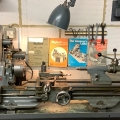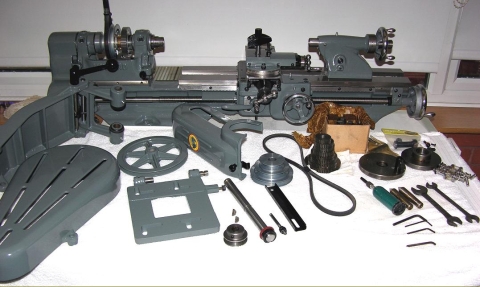When it was unveiled in August, 1946 (at £34, without a motor) the Myford ML7 lathe was greeted with astonishment. Designed by Ted Barrs during the closing years of WW2 (1939-1945), here was a well-designed, compact lathe with a neatly built-on motor-countershaft unit, fully guarded belts and changewheels - and with a specification guaranteed to delight any model engineer who had struggled with the inadequate machines offered by a host of under-capitalised, smaller English machine-tool makers in the pre-war years. The concept was not, however, new for the same kind of integrated design had been introduced as long ago as 1932 in the form of the 9-inch Atlas (developed into the long-lived 10-inch model), and the neat little "6-inch" first made in 1937.
An immediate sales success in both Britain and overseas many British customers, with an ex-Services gratuity burning a hole in their pocket, had to wait until vital export orders were fulfilled - the cry of the day being, "Export or Die" - and waiting lists ran to over 12 months. The lathe continued in production until 1979 and, because the design was so right to begin with, only very minor changes in specification were made over the years with the same design of cross and top slide units surviving until the late 1990s on the Super 7 based ML7R model.
All Myford ML7 lathes included a K prefix in their serial number (other designations include the ML.5 Capstan lathe as the "F", the M.U. capstan as the "G", the M.L.6 capstan as "H" and the Myford/Drummond M-Type as "J").
The ML7R was not based on the ML7 but on the Super 7 - the model being created by leaving off the spindle clutch and fitting the less expensive cross and top slides from the ordinary ML7.
A detailed description of the Myford ML7, and other Myford Series 7 and 10 models, can be found here, an interesting article about rebuilding an ML7 here and a photo essay about the ML7 here.
A number of copies of the ML7 have been found, including a rather fine one, shown at the bottom of the page, by the Italian firm Minganti.



